Refine search
Actions for selected content:
980 results in Applied probability and stochastic networks
Bibliography
-
- Book:
- Performance Modeling and Design of Computer Systems
- Published online:
- 05 February 2013
- Print publication:
- 18 February 2013, pp 531-540
-
- Chapter
- Export citation
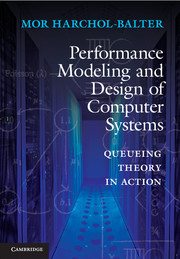
Performance Modeling and Design of Computer Systems
- Queueing Theory in Action
-
- Published online:
- 05 February 2013
- Print publication:
- 18 February 2013
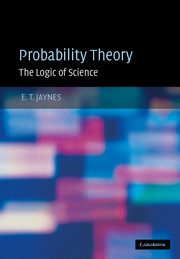
Probability Theory
- The Logic of Science
-
- Published online:
- 05 September 2012
- Print publication:
- 10 April 2003
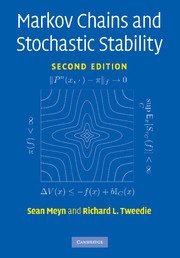
Markov Chains and Stochastic Stability
-
- Published online:
- 05 August 2012
- Print publication:
- 02 April 2009
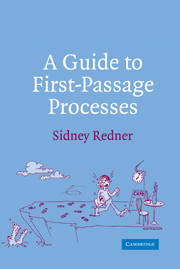
A Guide to First-Passage Processes
-
- Published online:
- 05 August 2012
- Print publication:
- 06 August 2001
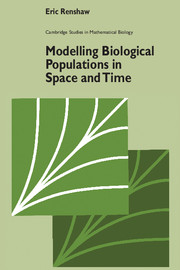
Modelling Biological Populations in Space and Time
-
- Published online:
- 05 August 2012
- Print publication:
- 26 July 1991
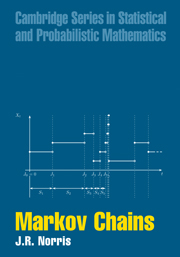
Markov Chains
-
- Published online:
- 05 June 2012
- Print publication:
- 28 February 1997
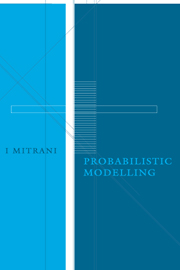
Probabilistic Modelling
-
- Published online:
- 05 June 2012
- Print publication:
- 11 December 1997
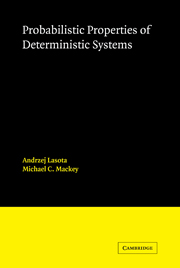
Probabilistic Properties of Deterministic Systems
-
- Published online:
- 05 March 2012
- Print publication:
- 27 December 1985
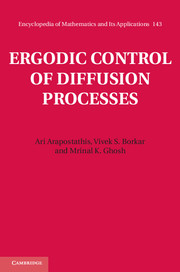
Ergodic Control of Diffusion Processes
-
- Published online:
- 05 December 2011
- Print publication:
- 17 November 2011
6 - Controlled Martingale Problems
-
- Book:
- Ergodic Control of Diffusion Processes
- Published online:
- 05 December 2011
- Print publication:
- 17 November 2011, pp 217-252
-
- Chapter
- Export citation
7 - Degenerate Controlled Diffusions
-
- Book:
- Ergodic Control of Diffusion Processes
- Published online:
- 05 December 2011
- Print publication:
- 17 November 2011, pp 253-278
-
- Chapter
- Export citation
Appendix: Results from Second Order Elliptic Equations
-
- Book:
- Ergodic Control of Diffusion Processes
- Published online:
- 05 December 2011
- Print publication:
- 17 November 2011, pp 303-310
-
- Chapter
- Export citation
2 - Controlled Diffusions
-
- Book:
- Ergodic Control of Diffusion Processes
- Published online:
- 05 December 2011
- Print publication:
- 17 November 2011, pp 30-85
-
- Chapter
- Export citation
Frequently Used Notation
-
- Book:
- Ergodic Control of Diffusion Processes
- Published online:
- 05 December 2011
- Print publication:
- 17 November 2011, pp xv-xvi
-
- Chapter
- Export citation
Epilogue
-
- Book:
- Ergodic Control of Diffusion Processes
- Published online:
- 05 December 2011
- Print publication:
- 17 November 2011, pp 300-302
-
- Chapter
- Export citation
8 - Controlled Diffusions with Partial Observations
-
- Book:
- Ergodic Control of Diffusion Processes
- Published online:
- 05 December 2011
- Print publication:
- 17 November 2011, pp 279-299
-
- Chapter
- Export citation
Subject index
-
- Book:
- Ergodic Control of Diffusion Processes
- Published online:
- 05 December 2011
- Print publication:
- 17 November 2011, pp 321-323
-
- Chapter
- Export citation
Index of symbols
-
- Book:
- Ergodic Control of Diffusion Processes
- Published online:
- 05 December 2011
- Print publication:
- 17 November 2011, pp 319-320
-
- Chapter
- Export citation
Frontmatter
-
- Book:
- Ergodic Control of Diffusion Processes
- Published online:
- 05 December 2011
- Print publication:
- 17 November 2011, pp i-vi
-
- Chapter
- Export citation
